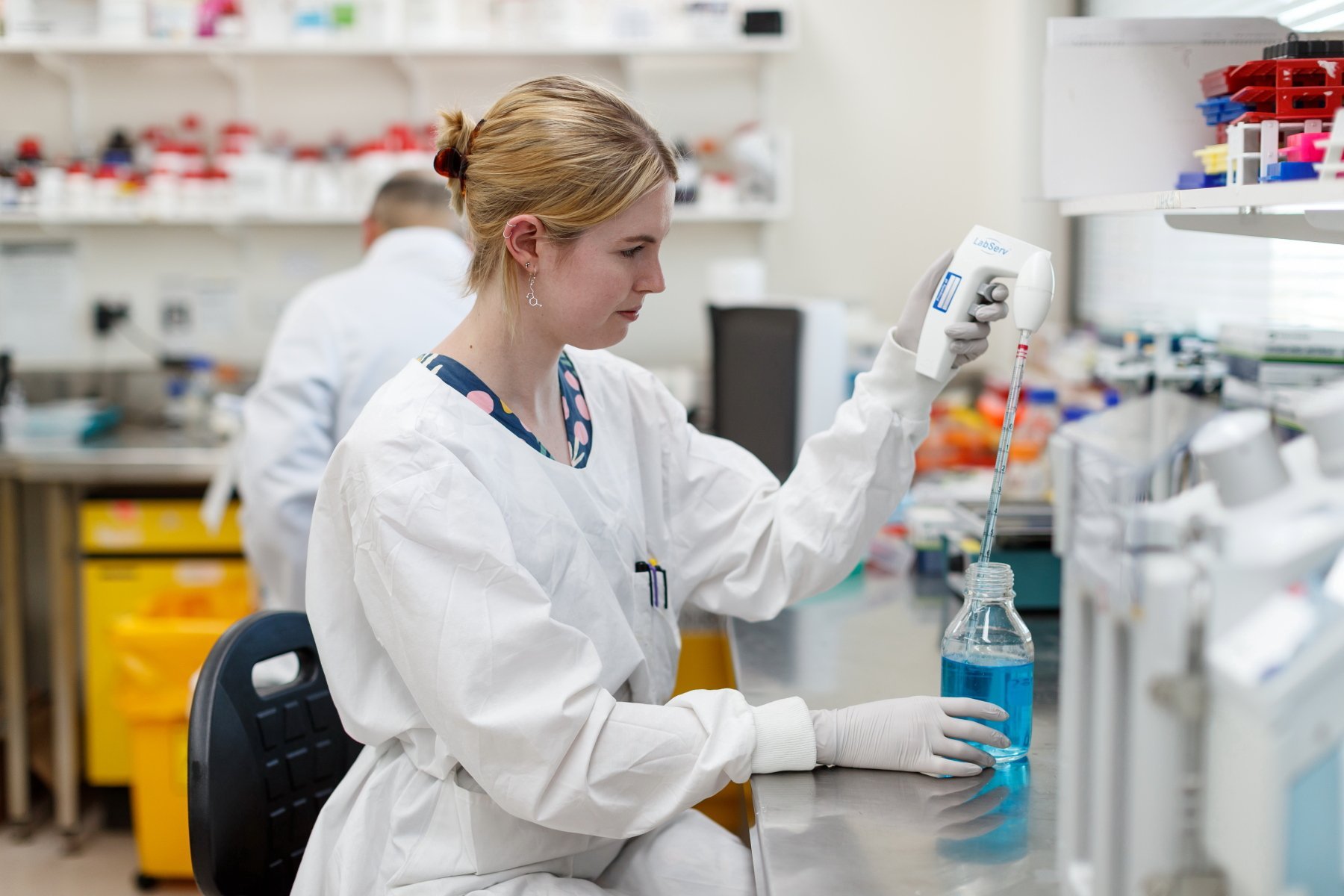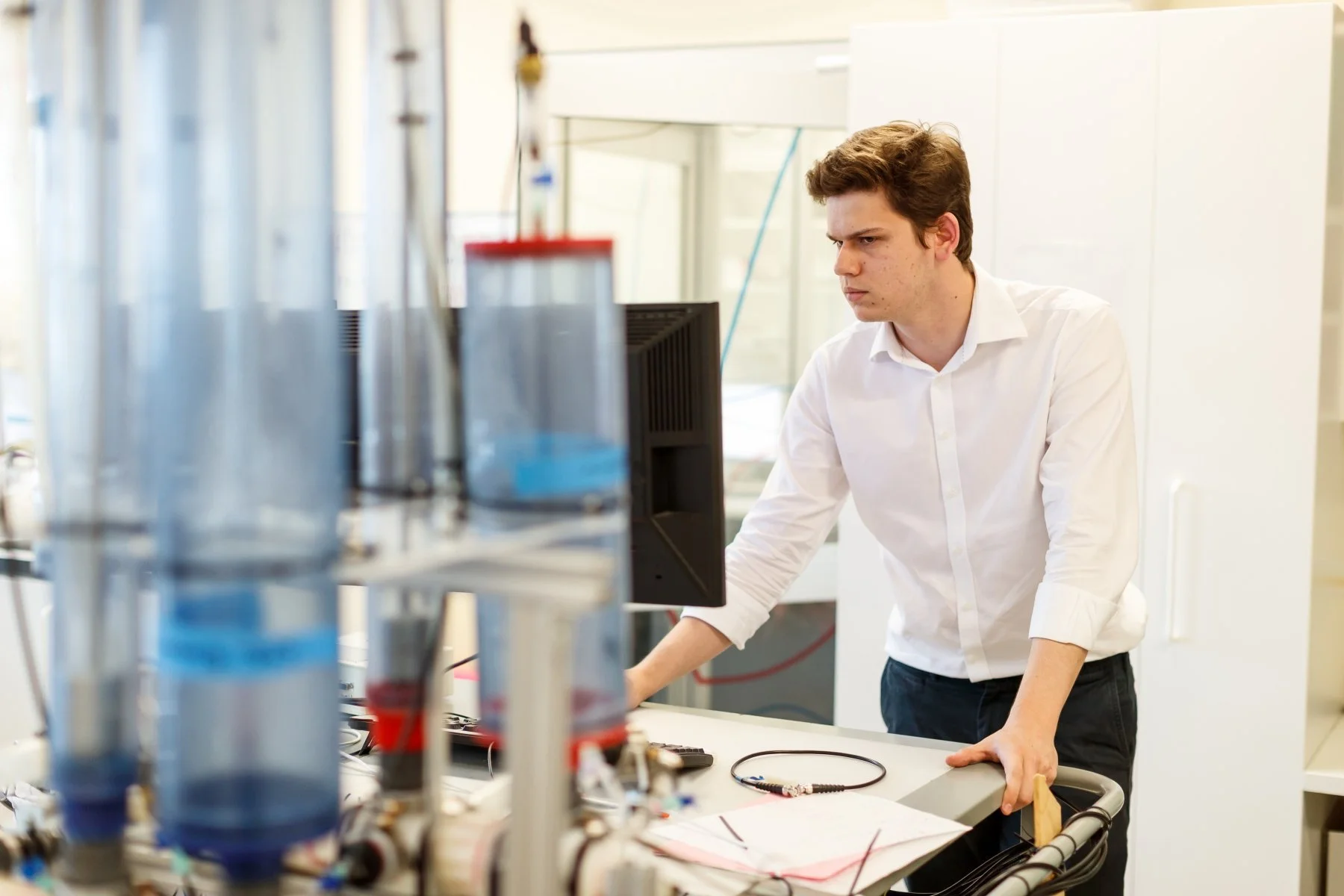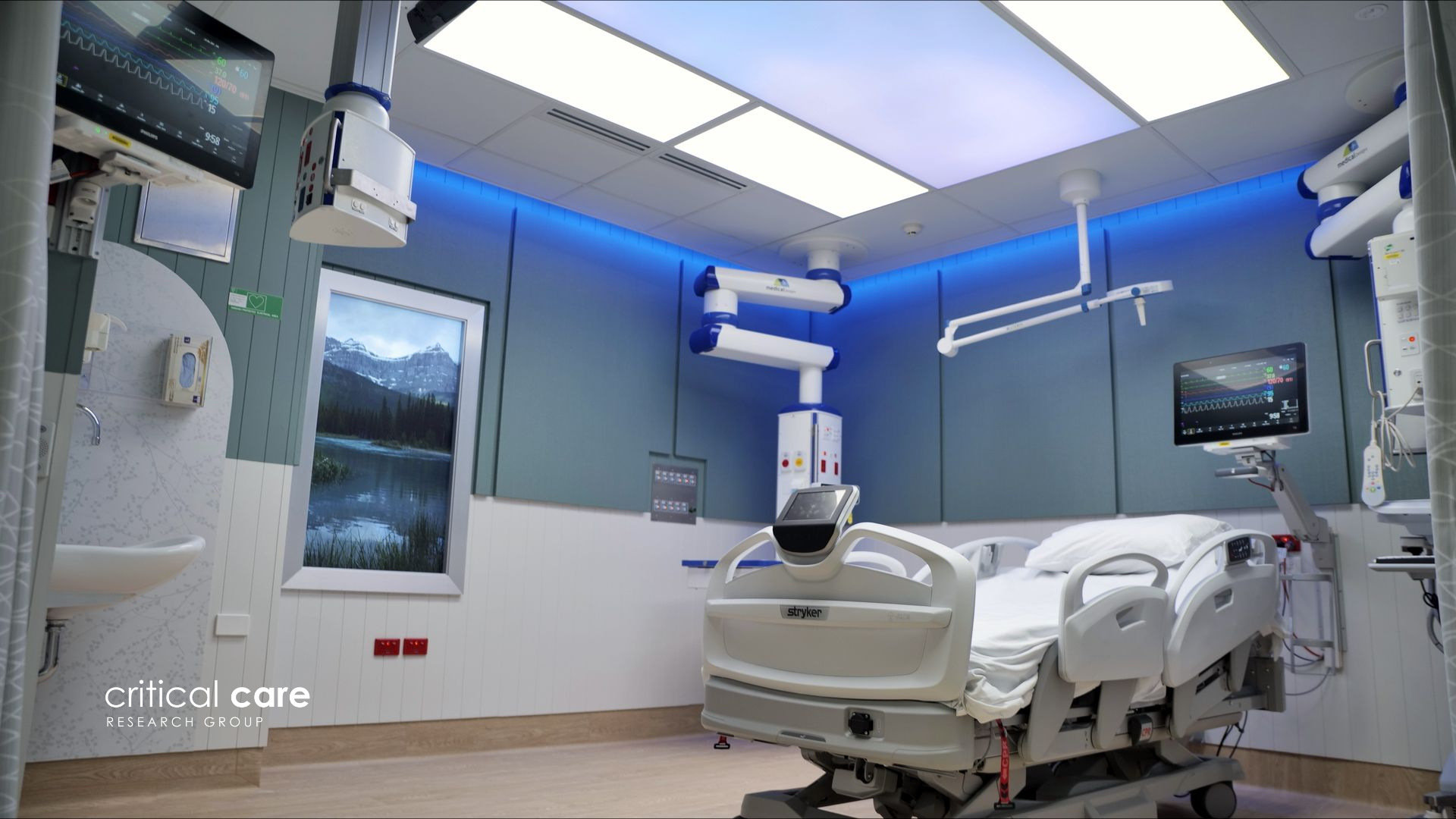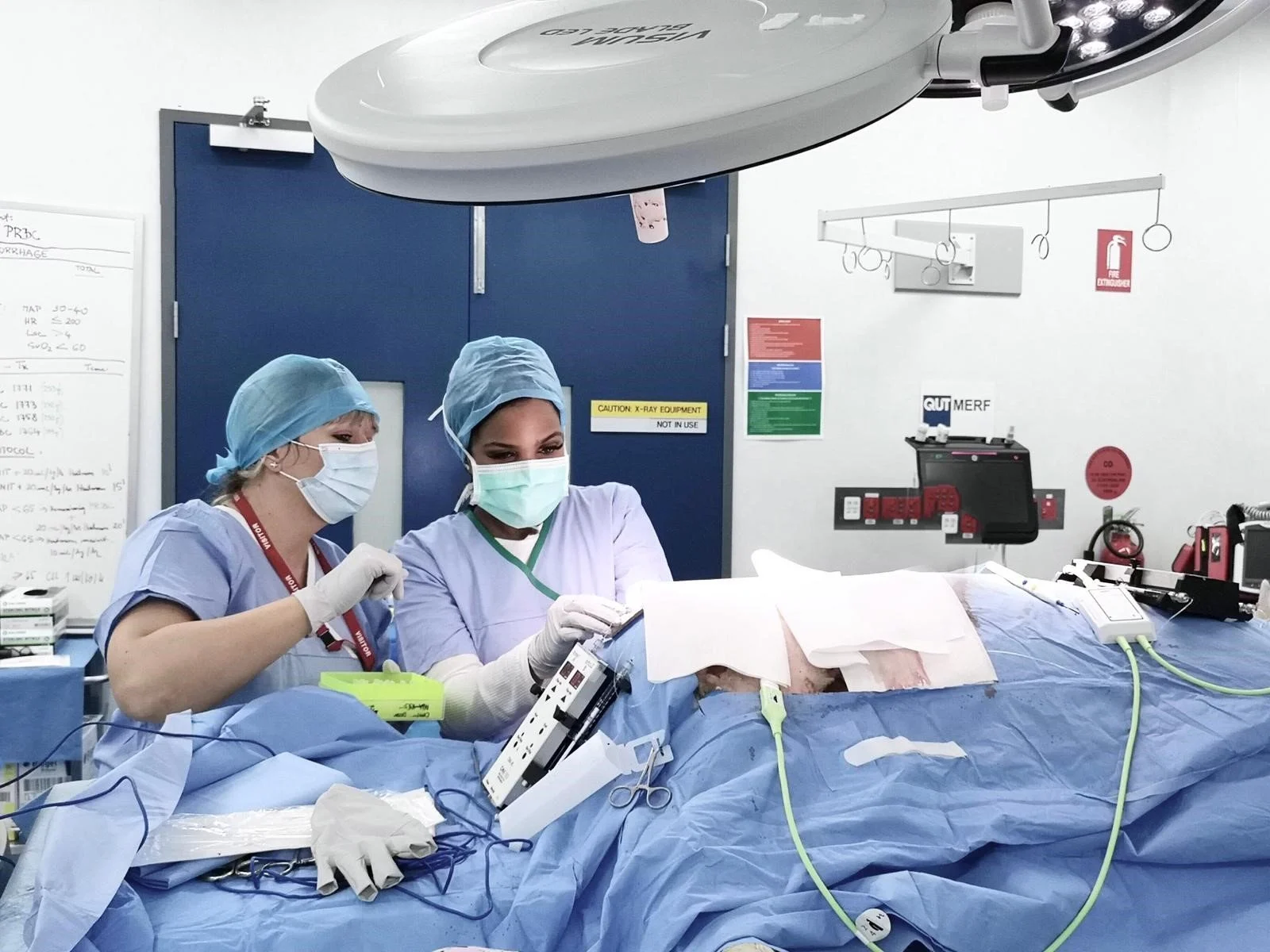Imperative Heart and Lungs Research
Our Scientific and Translational Research Laboratory (STARLab) focuses on heart, lungs and extracorporeal membrane oxygenation (ECMO) research. In particular, projects involve heart transplant (HTx), lung transplant, heart failure, and Acute Respiratory Distress Syndrome (ARDS).
STARLab specialises in large preclinical models using a variety of research methods and approaches, with nearly all research designed for quick translation into clinical trials.
-
Ex-vivo circulatory loop
An ex-vivo circulatory loop test is commonly used to determine haemocompatibility (or “device-induced blood trauma”) of mechanical assist devices. Haemocompatibility can test the likes of red blood cell destruction, platelet activation, white blood cell activation and coagulation protein degradation, which are important assays to design and develop safer blood-contacting medical devices. It provides a greater understanding of the blood-handling characteristics of the blood-contacting medical devices, with the ultimate goal of prolonging patients’ lives.
-
Flow cytometry
Flow cytometry is a high throughput analysis technique which enables cell characterisation and profiling. It utilizes lasers to both identify size and complexity of cells, and also to fluorescent light signals. A single cell sample suspension is stained with fluorescent antibody tags, and run through the analyser. Flow cytometry allows for multiple tags to be used, and by using gating strategies can identify different cell populations within the sample.
-
Gene Expression
Gene expression is the process where DNA instructions are used in the synthesis of a functional product, usually proteins. Our group utilises Real-time PCR and Nanostring nCounter technology to investigate changes in the expression of a particular gene or set of genes by measuring the abundance of a gene-specific transcript.
-
High-resolution Respirometry
High-resolution respirometry is a device used for measuring cellular oxygen consumption in a closed-chamber system with very high resolution and sensitivity. At CCRG, this machine is used to evaluate mitochondrial respiratory chain complexes (I-IV), maximal mitochondrial electron transport system capacity, and mitochondrial outer membrane integrity in healthy and diseased tissue.
-
Immunoassays
Immunoassays are used for the sensitive and highly specific detection of analytes of interest in biological samples. Enzyme-linked Immunosorbent Assays (ELISA) use antibodies which target and bind the analyte allowing detection. CCRG also uses multiplex technology, a magnetic bead-based immunoassay, which allows for the simultaneous detection of multiple analytes in one sample. Using immunoassays we are able to profile inflammation, organ damage, coagulation, and many other pathways.
-
Proteomics
An analysis of the entire protein complement of a cell, tissue, or organism under a specific, defined set of conditions.
-
ROTEM®
Rotation Thromboelastometry (ROTEM®) is a methodology based on thromboelastography originally described by Hartert more than 50 years ago. Today, it is frequently used to rapidly assess all the phases of coagulation from initial platelet–fibrin interaction, through to platelet aggregation, clot strengthening and fibrin cross-linking to eventual clot lysis. Within 30 minutes, a ROTEM® tracing provides information on clotting factor activity, platelet function and any clinically significant fibrinolysis to guide clinicians on the best products to be transfused to stop bleeding.
-
Tissue culture
Tissue culture looks at cell types. By growing cells and subjecting them to different conditions or treatments you can investigate pathways which are cell specific. This is a valuable method to tease apart systemic reactions seen within the body. Cells can be isolated from various sources (primary cells) or they can also be purchased as established cell lines.
-
Other
Blood product processing and compatibility
Complete blood counts
Contractility
Immunohistochemistry and Immunofluorescence
Multiplate
Scanning Electron Microscopy
Transmission Electron Microscopy
Discover more projects by The Critical Care Research Group






